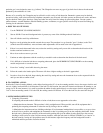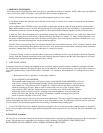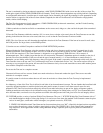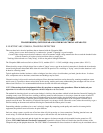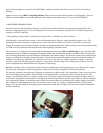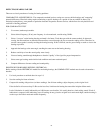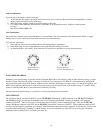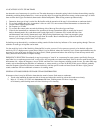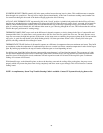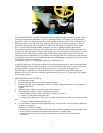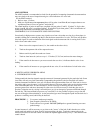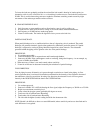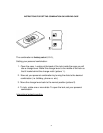28
ABCD METHOD
The ABCD method is recommended to check for the potential of competing ultrasounds downstream that
may carry back to the area of inspection and give a false indication of a valve leak.
For the ABCD method,
1. Refer to steps 1-5 above.
2. Mark two equidistant points upstream (these will be point A and Point B) and compare them to two
equidistant points downstream (point C and point D)
The sound intensity of points A and B are compared with test points C and D. If point C is higher than
points A and B, the valve is considered leaking. If point D is higher than point C, this is an indication of
sound being transmitted from another point downstream.
CONFIRMING VALVE LEAKAGE IN NOISY PIPE SYSTEMS
Occasionally in high pressure systems, stray signals occur from valves that are close by or from pipes (or
conduits) feeding into a common pipe that is near the down stream side of a valve. This flow may produce
false leak signals. In order to determine if the loud signal on the downstream side is coming from a valve
leak or from some other source:
1. Move close to the suspected source (i.e., the conduit or the other valve).
2. Touch at the upstream side of the suspected source.
3. Reduce sensitivity until the sounds are clearer.
4. Touch at short intervals (such as every 6 - 12 inches (15-30.5 cm) and note the meter changes.
5. If the sound level decreases as you move towards the test valve, it indicates that the valve is not
leaking.
6. If the sound level increases as you approach the test valve, It is an indication of a leak in the valve.
6. MISCELLANEOUS PROBLEM AREAS
A. UNDERGROUND LEAKS
Underground leak detection depends upon the amount of ultrasound generated by the particular leak. Some
slow leaks will emit very little ultrasound. Compounding the problem is the fact that earth will tend to
insulate ultrasound. In addition, loose soil will absorb more ultrasound than firm soil. If the leak is close to
the surface and is gross in nature, it will be quickly detected. The more subtle leaks can also be detected but
with some additional effort. In some instances it will be necessary to build up pressure in the line to
generate greater flow and more ultrasound. In other cases it will be necessary to drain the pipe area in
question, isolate the area by valving it off and inject a gas (air or nitrogen) to generate ultrasound through
the leak site. This latter method has proven very successful. It is also possible to inject a test gas into the
test area of the pipe without draining it. As the pressurized gas moves through the liquid into the leak site, it
produces a crackling sound, which may be detected.
PROCEDURE: 1. Use contact (stethoscope) module.
2, Start Frequency Selection at 20-25kHz.
3. Touch surfaces over ground - DO NOT JAM probe to ground. Jamming can cause
probe damage.
In some instances it will be necessary to get close to the "source" of the leak. In this situation, use a thin,
sturdy metal rod and drive it down close to, but not touching, the pipe. Touch the contact probe to the
metal rod and listen for the leak sound. This should be repeated approximately every 1-3 feet until the leak
sound is heard.



